Media | Articles
How Freddy “Tavarish” Hernandez Built a YouTube Exotic-Repair Kingdom
This article first appeared in Hagerty Drivers Club magazine. Join the club to receive our award-winning magazine and enjoy insider access to automotive events, discounts, roadside assistance, and more.
On the day I visited Freddy Hernandez in central Florida, his YouTube channel had more than 2.77 million subscribers. It hosted 571 separate videos, more than 442,792,900 views in all. Live since February 20, 2006, it is at the time of this writing the 92nd largest automotive channel by subscriber count, according to VidIQ.com.
“My name is Tavarish,” Hernandez’s channel description reads, “and I make videos about buying, modifying, and breaking cars. I also have opinions, most of which are wrong.”
Those traffic numbers, for context, are substantial in a general sense and massive in an automotive one. (Jay Leno has 3.6 million subs; Supercar Blondie has 19.1 million. The most successful individual creator on YouTube, Jimmy “MrBeast” Donaldson, has more than 250 million.) As for the name, “Tavarish” is a romanized version of the Russian word товарищ, for “comrade” or “friend.” Hernandez, 37, was born in Russia but moved to the United States with his parents at the age of 3. His channel’s logo is a cartoon drawing of his face, mouth open. The drawing resembles him in the way that Mickey Mouse resembles an actual mouse, which is to say not at all and yet also very much. In person, he is a decidedly noncartoonish and generous guy who seems to pride himself on treating his employees well while constantly discussing, in rapid-fire and self-effacing fashion, car repair and story structure and audience development and just how much he doesn’t know about any of that stuff.
Which is charming, really, because he knows a tremendous amount about all of it.
Marketplace
Buy and sell classics with confidence

I was there, on that YouTube channel’s primary set, aka Hernandez’s 5200-square-foot shop, around an hour north of Orlando, for the better part of a day earlier this year. He rolled into the building shortly after 10 in the morning wearing a Valvoline hoodie and the heavy-lidded eyes of a man who has not slept much. He had been up most of the night editing footage, he said; he still prefers to do most of his edits himself.
The nearly bare shell of a McLaren P1 sat quietly in the back of the room, its 727-hp twin-turbo V-8 and seven-speed transaxle parked nearby on the floor. An Aston Martin V8 Vantage once owned by car YouTuber Doug DeMuro sat on a two-post lift in the corner. Twenty feet away, three separate McLaren wiring harnesses sprawled across the concrete floor like torn spiderwebs, salvage parts from three different models—a 650S, a 720S, and that P1.
“We have to make one harness out of these three,” Hernandez said, waving a hand at the wires. Because, of course, the P1’s harness was damaged in a flood in the wake of Hurricane Ian in 2022. A new factory P1 harness from England meant $20,000 and a year’s wait. Punching the words “P1 Hurricane Ian” into Google will give you pictures of Hernandez’s McLaren taken by its previous owner, the car floating down a street in South Florida with a mere 300 miles on the odometer. This was before Hernandez owned the car; he saw the blog posts of the P1’s demise like everyone else, then found the McLaren on Copart.com, the salvage-auction site, in the wake of the flood.
The internet went bonkers when those photos appeared online, maybe a few days after the hurricane itself. How often do you get to see seven figures of 903-hp British hybrid hypercar, one of only 375 built, awash up to its door mirrors and, once waters receded, high-centered on a sidewalk atop a broken toilet?
Hernandez bought it, totaled, off Copart for $575,000. He had to get a loan from a bank, risk everything, but he saw it as a challenge. (On applying for that loan, how he was surprised when the bank said yes: “I was hoping,” he said with a laugh, “that the answer was no.”)
“What that means,” he said, in the video where he heads off to retrieve the McLaren, “is that I am scared—I’m like legitimately frightened.” But he was also, he said, “extremely excited, because this is the biggest project on YouTube.”

Hernandez was not wrong, then or now; a year after his purchase, the car is still the most famous hypercar on the internet and still a work in progress.
On the day of my visit, the McLaren’s body was half bare carbon, half Valvoline-logoed wrap (the brand is a sponsor) left over from a 2023 SEMA appearance. The rest of the shop was lined with sheetmetal. Cars that Hernandez and/or his three-person team had rebuilt (e.g., a Ferrari F430 Scuderia with a manual-gearbox conversion, a Lamborghini Gallardo Spyder); rare cult models, both valuable and not (an R32-chassis Nissan GTR NISMO, two damaged and dismantled Noble M12s, a Mitsubishi 3000 GT VR4); parts and bodywork of all kinds, too much rolling stock and too many scattered pieces to list. All projects to come, in waiting, or finished. Virtually everything on the property was bought crashed, non-running, just plain ugly, or all three. All of it has been or will be chronicled on the channel.

Late in the morning, Hernandez gave us a tour of his channel’s physical footprint—two large 5200-square-foot shop facilities in the same industrial park, plus two more storage units off-site, 9200 square feet in total. The first shop was familiar from his videos. The second, one unit over, was a work in progress, formerly occupied by a hot-rod business and about to be remodeled to house service work. The storage units, a short drive away, were each a funky little gold mine of eccentricity. Over here, the stripped shells of two Dodge Vipers; over there, an Autozam AZ-1 Japanese kei car with gullwing doors. The cut-off roof of a Ferrari F355 Berlinetta laid atop a fire-damaged F355 Spider. A scruffy but honest-looking 1987 Honda CRX sat up against a far wall. (“200,000 miles,” Hernandez said. It came from the original owner, now deceased, and he liked the car’s story.)
YouTubers, especially car YouTubers, tend to generate a certain kind of public animosity. Millions of fans love you, line up in droves to meet you and your cars at events like SEMA; countless older folks see what you have built and grumble about how it doesn’t represent “real” work. Why, I asked, do you think this stuff upsets people?
“What I think happens, and why I think people can look at someone like Doug DeMuro with some sort of ire, is because they think it’s not a real job and they didn’t deserve their success. It’s like… here he is with a Porsche Carrera GT, and then talking about, ‘Oh, I just bought a Countach, isn’t my life nice, and I get to spend my summers in the Hamptons, in my second house.’
“That’s great, but they don’t see that that dude works so, so hard, and he developed that platform by himself…”
DeMuro now runs Cars & Bids, an online auction site that received a $37 million cash injection from investment firm The Chernin Group in January 2023. Anyone who works in media, I offered, knows that any audience—much less an auction site worth double-digit millions—comes only from hard work.
“I can [only] talk about my own experience,” Hernandez said. “When I first got the Lamborghini, I think it was a relatability thing, and people were like, ‘Oh, the common man, the layman has gotten a supercar, even though it’s a Gallardo, it’s not anything where the doors go up.’ Then, after a while, people don’t know that you didn’t have money [to begin with, when you started].
“They look at these cars, and they go, ‘Oh, well, must be nice, while I have to go and work to feed my family.’ I get up, and I’m on until I pass out at night, that’s it. My life is nothing but work. I go from here to my house, and when I go to my house, I edit.”
He pointed to the friends working in his shop. “These guys, they go to bars, they go watch a movie, they’re like, ‘Hey, did you watch that Netflix show?’ I’m like, ‘I don’t know what Netflix shows are.’”
How long, I asked, have you been running like that?
“For as long as I’ve been on the channel and gaining more of these cars, and projects… but… that’s what it has to be. I’m not complaining, because it’s better than being a coal miner. [Normal life,] you leave your job, you have time for family, you can go play video games. I don’t play video games. I want to.”
Do you miss that kind of life, I asked?
Sure, he said with a laugh. “Absolutely. But then… I am very motivated by guilt.”
***
The one thing everyone always wants to know about YouTubers is how they got started—how they got to the point where they could take the plunge and check out of anything resembling normal employment. People find those moments fascinating because they are. Because everyone has, at some point, dreamed about ejecting from the structures and paths of traditional work.
Again, Hernandez was born in Russia. He came to America, to New Jersey, when he was 3, right as the Soviet Union was collapsing. “My parents lived, essentially, in the projects. My father cleaned toilets. My mom was a bank teller.” In the mid-1990s, his parents bought a house in Elizabeth, New Jersey, where they still live.
“I went to school, but nothing really panned out. I was really, really into cars at the time.”
He studied marketing. After a while, school began to seem like little more than a good way to build a lot of student debt. His dad ran an insurance agency then, and he would help out with the business. There was an entrepreneurship course; he had this moment, the moment a lot of people have in courses like that, where he realized it wasn’t going anywhere. Where you wake to the fact that the professor is lacking in real-world experience. Maybe, Hernandez thought, he wasn’t a team player. Maybe he should go work for himself.

He worked retail jobs. He had another universal moment, the one you get in a lot of those jobs, where someone tells you to do something, to really pull together and try as a team, and you look around and realize that pulling is mostly just for the person who runs the team, it isn’t going to benefit the team itself, or the customer, or anyone else. Other jobs came and went.
“I had a stake in one of my friend’s businesses where we rented scooters, like Vespas and stuff, to people in New York and New Jersey. I thought, maybe this is something I could put my spin on, put some effort into it. Then I realized the money’s not there and the liability’s through the roof, it’s just insane. It also taught me that you could work really hard and not get anywhere. You can be spinning your wheels, but you can learn skills from that.”
The scooter business had big clients. “The New York City Marathon, things like that. It’s funny, during that period, if you ever go to watch the New York City Marathon, like in 2014, 2015, whenever they have scooters chasing the runners, that was all us. We didn’t make any money, but it’s fine. It was fun.” He learned, he said, how to manage expectations, be accountable to people.
He did other things. He worked for Jalopnik as a writer, to get closer to cars. (“I was living with my parents at the time. Just to be in that world meant everything to me.”) He founded and ran online political tabloids. The latter wasn’t fulfilling—“extremely exhausting and depressing,” he once tweeted, “empty and not helping anyone”—and Jalopnik was the kind of job that didn’t pay a lot but let you try things and travel. Both environments taught him how to adapt to an audience, to chase what resonates with people.
“I wasn’t doing much. I was like 26, 27. I had a 1998 Nissan Maxima, and I would do stuff in my parents’ driveway, working with local forums to work on cars. I would do suspensions for like $80, engine swaps, stuff like that. I had a website where I wrote stuff about cars. I would try to be a little Wheeler Dealers. I was never good at it. I would buy, restore, and modify them, then try to sell them on. I’d hope sometimes for a profit, but I could never sell them, it never really panned out.”
Jalopnik was large then and still influential in the business, with millions of readers. The site brought an audience and helped promote his YouTube channel.
Hernandez’s first video, “1998 Nissan Maxima Trying to start – Hard Start Issue,” went up on April 12, 2006. It was 26 seconds long. After that, the channel went quiet until spring 2015. Rapid experimentation followed—Hernandez tried, among other things, interviews with automotive-celebrity guests, new-car media launches, and narrated car repair. Even now, most of his efforts from that time remain in the low four figures in views.
Around 2016, Hernandez changed his approach, focusing more on repairs. More specifically, he began to buy high-mileage used and vintage iron, erring toward the late-model, high-repair-cost stuff most folks won’t touch. He chronicled his life with his daily-driver 2000 Mercedes-Benz S-Class, bought for $3000; he bought an Aston Martin V8 Vantage for, as one video title said, “the price of a Toyota Camry.” There was a 1948 Willys Jeep he fixed and took to Moab, then an $8900 Mercedes SL55 AMG, then a cheap second-generation Toyota MR2—the list goes on.
Real traffic began to appear: view counts in the high five figures, then a few blips at five or 10 times as much. Around six years ago, the curve began to trend inexorably upward. Through it all, you can see Hernandez experimenting, as most YouTubers did and do, with thumbnails, titles, drama. Titles like “Trying To Start The Worst 3000GT VR4 In The World” lit off (558,000 views to date), while phrases like “What It’s Like To Buy A Super Cheap World War II Rifle As Your First Gun” (18,000 views to date) faceplanted. He was one of the first to use the “I Just Bought the Cheapest [Car Model X] in the Country!” trope.
If the internet never forgets, then a YouTube channel never lies about how you learn, so long as you don’t delete your old uploads. Hernandez’s back catalog is a reminder of the old media saw that if you’re making the same thing you were a year ago, in the exact same way, you’re probably corporate, boring, or both. The face-plant approaches stopped reappearing; the cars and parts grew more diverse. Hernandez moved from New Jersey to Florida. He tried and abandoned various video gimmicks, landed corporate sponsorships, stood on stage at festivals, found himself a draw for autographs at those events, got used to speaking to thousands in person. He bought a project house and chronicled that in video. And so on.
3 of Our Favorite Tavarish Projects



- 2015 McLaren P1 Flood Salvage: A 903-hp carbon-fiber hybrid that spent days soaked to the gills and floating in a mix of flood trash and saltwater. Bought online, sight unseen.
- The Five-Day Hellcat Rental Conversion: Was a V-6 Dodge Charger rental car. Got stolen and abandoned. Is now a Dodge Charger Hellcat Redeye in everything but VIN. The space between: five days in the shop.
- The Buried Range Rover: In 2018, YouTuber Tyler Hoover buried an early-2000s Range Rover HSE. A year later, Hernandez tried to start the car after it was unearthed. They didn’t get it running, but the process was amusing.
Why did people watch? Why do people watch anything? Hernandez himself was at least entertaining; in the moments where he wasn’t actively playing to the camera, it was only because the work was interesting. Workarounds developed when factory tools or parts weren’t available. Odd write-off cars saved for the hell of it. A sense that the guy was like you, or at least you with gobs of available shop time and someone else’s checkbook. And a strong acceptance of the idea that an S-Class, or a Ferrari, or anything else, is simply a car, built by tools and hands and so rebuildable by them. No magic.
The year-make-model details are important here, an illustration of variety. It may sound redundant, but Hernandez told me that he makes a point to keep his channel focused not on what “the [YouTube] algorithm wants,” but on what he finds interesting—anything on wheels, no borders or rules, stories in general. But the car repair struck a chord with people. There was something in how Hernandez never really seemed to know what he was doing with a wrench but also did. Watching clips from old uploads, he seems honest and amusing, and he makes it clear that the work is being done in-house. (Many YouTube “build” channels farm out skilled labor like engine builds or body work.) He began meeting fans and viewers who told him that his videos meant something to them, helped them through their day-job drudge.
Walking around his shop in Florida, I was reminded of the two key rules in making anything for public consumption: First, follow your gut and make what you want to see in the world. And second, if no one cares about what you’ve built but you still want an audience, stop doing whatever isn’t working. Try something else, over and over, until you figure out what does.
***
It was toward the end of the shop tour, when we were getting ready to leave, that I remembered something. You mentioned something earlier about guilt, I said.
“I don’t want to let people down,” Hernandez said. It was a comment in passing, but he seemed genuinely concerned about this, which I found charming and empathetic. (Your narrator is the son of a Jewish mother and a storyteller and thus perpetually worried about letting people down.)
“One of the interesting things about YouTube,” I offered, “is that there’s this traditional obligation to the audience, to be and respond to what they want. But there’s also an obligation to the YouTube algorithm, which gets you paid but doesn’t always serve a viewer what they might like. How do you reconcile the two?”
He responded without so much as a beat. Story matters most, he said. And then: “The thing I’ve learned with writing and making content is the audience will not know what they want until you show it to them.”
Old truisms in media, I noted, good ones. But what did he mean about letting folks down?
“I mean… I don’t want their idea of what [a] build is, in their head, to be cheapened. I don’t want them to think that we’re cutting corners.”
What would that look like?

“Some YouTube channels will rebuild a car and it’s only for YouTube. Those cars don’t see the street, the dash is 10,000 lights, like a Christmas tree. Those aren’t real repairs, they look good on camera—it’s like a movie car. Everything we try to do here, it’s like, what does the factory recommend we do? We had to replace basically the entire front structure of that Ferrari over there. Jack [his in-house body-work specialist] did all the body work. He’s an expert in the field, he’s worked as a tech for years, he’s like, ‘Yes, let’s do it exactly the way Ferrari would do it.’
“Now, you look under that car, you can’t tell anything happened. We did the same thing with the McLaren. How would they repair carbon? How would they do this? … I want to build up this idea for [the audience] that this car is going to be worthy of [the name on its badge] and over-deliver on that. I don’t want to under-deliver on the promise, ‘Hey, I’m going to have a running P1,’ then go, ‘Hey, I just put a Honda K-series [four-cylinder] in there and boom, it’s running, thanks for watching.’”
That is not, I offered, the mindset that old and grumpy people often ascribe to YouTubers. There’s a perception that the work is… easy money.
“I feel like it’s an indulgence to take time off, and I don’t deserve that indulgence, because other people are working really hard, and I have to be on top of this, delegate that, because the emails don’t stop. Everything is: Hey, we have this brand deal that we want to work with, or how far are we along on this project? I feel guilty whenever I’m sitting idle, because I know other people around me who are moving. I have to, not only to be an example for them, but to move [projects] forward, and to show [the audience] that I’m not just sitting, twiddling my thumbs.”
I glanced around the room. There is a lot of work done here, I observed, for a group of folks twiddling.
“I think demystifying things that are bewildering to a lot of people is interesting. ‘Hey, it’s actually not that hard, not that different from the stuff that you guys deal with,’ like, a regular viewer that has maybe a Camry or some enthusiast car.

“We’re doing the same thing. It’s just a bunch of buddies ****ing around in a garage. The cars are more expensive, but we’re still doing the same thing. We’re just making jokes like, ‘Well, that shouldn’t go there. What do we do with all these bonus parts?’
“I think the idea for a lot of people is maybe that you can get something for not a lot of money or you can cheat the system. Like, I want this really high-dollar car, but I don’t have the experience, maybe I get a crappy version and put some sweat equity into it.
“Realistically, parts are still expensive. But you learn stuff along the way, if you’re a sponge for information, and that’s really interesting for me. If I go and buy a Lamborghini and come to it with the idea that a bolt’s a bolt—these things, they’re not magic, they’re just expensive. If I’m trying carefully and I learn more about it, maybe that’ll demystify it a bit.
“Now we have this $2 million hypercar, a car that most people [will never] even [get a chance to] see. I took it apart myself, and I’ve put it back together multiple times. There’s nothing on that car that scares me now. That in itself has a really big value for me.”
Earlier, in another of Hernandez’s buildings, we had stood in front of a modified 1993 Toyota Supra that he had rebuilt and given Rex, his detailer and friend. The video of the occasion (“I Surprised My Best Friend With His Dream Toyota Supra [Secret 2-Year Build]”) is—I do not use this phrase lightly—genuinely heart-warming. It reminded me of the one thing YouTube has always seemed to reward, that audiences in general have rewarded since the dawn of entertainment—being yourself. The notion that you shouldn’t do what everyone else is doing unless it feels natural, unless you think you could do it better, even if that better seems wrong at first.
“We try to make a nice product,” Hernandez said. “To do it as best we can. We do have expertise in our fields.”
He let out a small sigh. Then he looked across the shop at Jack and Rex, at his friend Tommy, at the other friend he had brought in to help sort those McLaren harnesses, a man sitting cross-legged on the floor, mapping various connectors. Hernandez smiled.
“Well, these guys do. I don’t.”
***
Tube Stars
Tavarish isn’t alone. YouTube DIY channels have become a repository of mechanical know-how—and one of the best ways to kill time. Here are three of our favorites.
Rob Dahm
Through comprehensive disassemblies and bonkers builds, Dahm demystifies (and glorifies) the rotary engine.
- Subscribers: 1.18M
- Videos: 829 since March 2009
- Total Views: 240,930,348
- Expertise: All Things Wankel
- Highlight: An all-wheel-drive, four-rotor RX-7 hits the dyno. It spits flames. Lots of them.

ChrisFix
A lot of YouTube DIY, like Tavarish, is more spectacle than how-to. Nothing wrong with that, but sometimes you just want straightforward education. That’s ChrisFix. From his New Jersey driveway, he demonstrates basic maintenance tasks—using hand tools and jack stands.
- Subscribers: 10.2M
- Videos: 390 since January 2010
- Total Views: 1,682,585,317
- Expertise: DIY for the everyman
- Highlight: Chris makes a clutch change, a daunting task, seem doable.

Redline Rebuild
Part instructional, part DIY theater, and eminently binge-worthy, these richly shot time-lapse videos show the entire engine-rebuild process. Builder Davin Reckow, a mechanical engineer by training, periodically explains as he goes.
Subscribers: 3.13M
Videos: 27 since March 2015
Total Views: 201,805,243
Expertise: Engine tear-downs and rebuilds
Highlight: Reckow literally digs out an abandoned 1950 Chevy truck from the woods near Hagerty headquarters and proceeds to rebuild its grimy Stovebolt six.

***
Check out the Hagerty Media homepage so you don’t miss a single story, or better yet, bookmark it. To get our best stories delivered right to your inbox, subscribe to our newsletters.

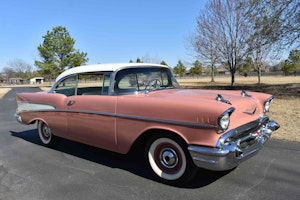

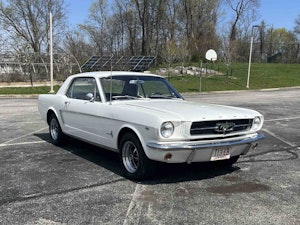
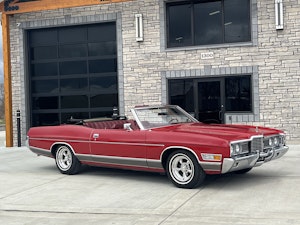

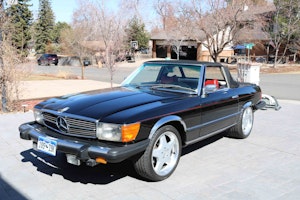

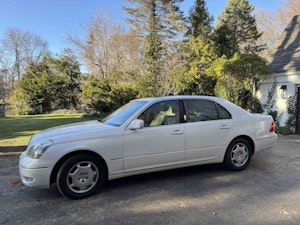















Good for him I love to see success stories.
There is LegitStreetCars on youtube which is pretty good. He does lots of normal stuff like Firebirds, Grand national’s, Corvette’s, Mitsubishi Eclipse GSX, Nissan GT-R then he also will do some problem child Mercedes or BMW. I will admit build videos are not really my thing, I skim through them.
I agree–Alex is down to earth, and works on cars that many of us can afford. It’s interesting seeing how his videos have grown from being a DIYer in his garage to having his own shop.
If you have photos of yourself in the thumbnail with your mouth open…..I’m moving right along.
You burned calories to type that. Feel good?
Yet here you are commenting.